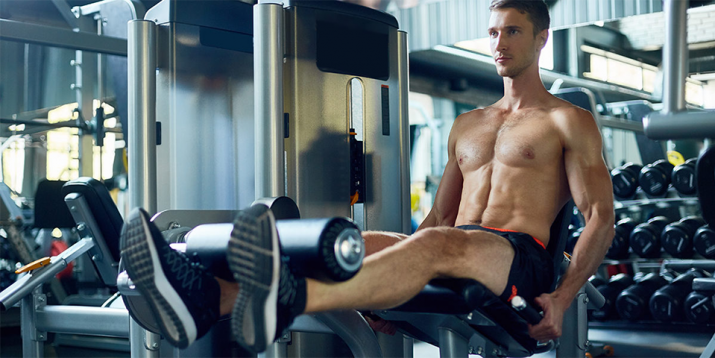Are Quad Extensions Safe for You?

The quadriceps are a group of four muscles found in the front of your thighs. They are all about extending, or straightening, the knee.
When you get up from the couch, climb the stairs, or kick a ball, your knee extends.
So it makes sense that, to train the quad muscles, you’d simply straighten your knee with moves like the quad extension.
What Are Leg Extensions?
A single-joint movement that targets the quads, leg extensions (a.k.a., quad extensions) involves straightening the knee repeatedly under load.
Most gyms have dedicated leg extension machines.
You can also perform quad extensions at home with a resistance band or just your body weight.
Can Quad Extensions Hurt the Knees?
The quad extension is controversial because, being a single-joint exercise, it places more stress on the knee than multi-joint exercises such as the squat and lunge.
“But that’s likely not a problem if your knees are healthy,” explains Trevor Thieme, C.S.C.S.
“Like most exercises, the knee extension only increases your risk of injury if you have a pre-existing issue (in this case, with your knees) or if you perform the exercise with incorrect form or excessive weight,” he adds.
If you do have cranky knees, however, you should steer clear of this exercise, he says.
Unlike squats and lunges, which load the knee primarily with compressive (downward) force, quad extensions apply shear (front-to-back) force.
Unstable knees are more vulnerable to injury from shear stresses as opposed to compressive forces.
No matter the state of your knees, safely and effectively performing leg extensions relies on good form.
How to Quad Extensions With Perfect Form

If you’re using a weight machine:
- Line up your knees with the machine’s axis.
- If the machine you’re using has two pads, set up with the top one firmly on your thighs and the other against the front of your ankles. If the machine doesn’t have a thigh pad, simply hold onto the handles or either side of the seat.
- With control (no swinging or using momentum!), squeeze your quads to extend your knees until they are straight but not locked out.
- Pause, then slowly bend your knees to return to the starting position.
If you’re using a resistance band:
- Sit on the edge of a chair or couch with a light resistance band looped around one ankle and connected to a sturdy point directly behind the ankle, such as a furniture leg. Keep the band taut in the starting position.
- With control (no swinging or using momentum!), squeeze your quads to extend your knee until it is straight but not locked out.
- Pause, then slowly bend your knee to return to the starting position. Do equal reps on both sides.
What Are Some Alternatives to Leg Extensions?
Whether leg extensions are a good fit for you or not, work some of the best quad exercises into your workouts.
For well-rounded quad strength, performance, and injury prevention, the key is incorporating a variety of exercises into your routine.
1. Squat
- Stand tall with a pair of dumbbells by your sides, feet shoulder-width apart, and toes pointed forward.
- Keeping your back flat and core braced, push your hips back, bend your knees, and lower your body until your thighs are parallel to the floor. You want to “sit” into the exercise, pushing your butt back like you’re lowering yourself onto a chair or bench. Never bend forward at your waist — that will only increase the stress on your spine and throw you off balance.
- Pause, and then push back up to the starting position.
2. Lunge
- Stand tall holding a pair of dumbbells at arm’s length by your sides (palms in) with your feet hip-width apart.
- Keeping your chest up, shoulders back, core braced (imagine someone is about to hit you in the gut), and back flat, take a large step forward with your right foot. Lower your body until your front thigh is parallel to the ground and your rear knee bends 90 degrees (it should hover a couple of inches above the floor).
- Pause, and then reverse the movement to return to the starting position. Repeat, this time stepping forward with your left foot. Continue alternating legs, performing equal reps on each.
3. Step-Up
- Stand tall holding a pair of dumbbells at arm’s length by your sides, and place your left foot on a bench so that your hip, knee, and ankle are all bent 90 degrees.
- Keeping your chest up and shoulders back, push your body up with your left leg until it’s straight (keep your right foot elevated slightly behind you).
- Pause, and then lower your body back to the starting position under control. Perform equal reps on both legs.
4. Bulgarian Split Squat
- Stand facing away from a bench, holding a pair of dumbbells at arm’s length by your sides. Place the toes of your left foot on the bench behind you.
- Keeping your torso upright, lower your body until your right thigh is parallel to the ground (don’t let your left knee touch it).
- Pause, and then push back up to the starting position. Do equal reps on both legs.
